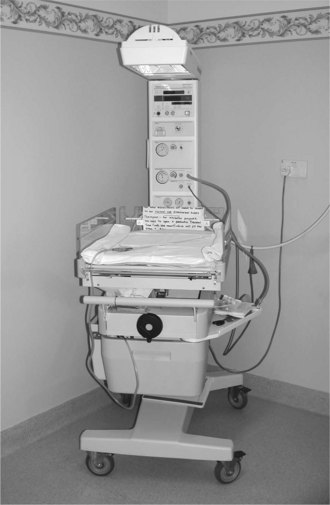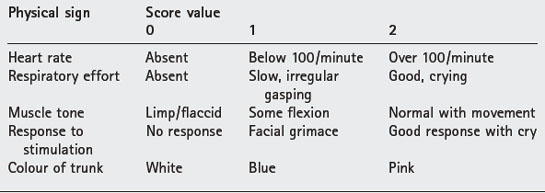Chapter 12 The newborn
Aftercare is most effective if:
PHYSIOLOGICAL CONSIDERATIONS
Body temperature
Keeping the baby warm is essential. The newborn’s large surface area to body volume ratio, especially if preterm or of low birthweight, allows rapid cooling. A rapid drop in body temperature increases the need for oxygenation and exacerbates metabolic acidosis. Maintenance of body temperature is therefore particularly important in depressed infants. Failure to maintain adequate body temperature in preterm neonates is a major contributory factor to mortality due to respiratory distress syndrome. All neonates should be dried quickly, wrapped in a prewarmed towel and placed in a warm environment. Most resuscitation trolleys now incorporate an overhead radiant heater which should be switched on well in advance (Figure 12.1).
RESUSCITATION AT BIRTH
Procedure at delivery
At the moment of birth start the clock, and dry and cover the baby in the warm towel. Assessment at birth is commonly by the Apgar score which documents five criteria (Table 12.1). Each criterion is scored from 0 to 2 to describe the spectrum from poor to good. The maximum score is 10 points. The infant is examined at 1 minute and again at 5 minutes after birth, scores being allocated at these two intervals. The score does not predict the outcome for the baby, and it is not useful in the management of individual babies, but it can be repeated again at regular intervals to document the response to resuscitation.
Decide on the baby’s need for resuscitation by assessing four of the Apgar score signs – breathing, colour, heart rate and tone. The baby will then be in one of four groups and the appropriate management is followed (Table 12.2) proceeding in the order ABCD:
Stay updated, free articles. Join our Telegram channel

Full access? Get Clinical Tree




